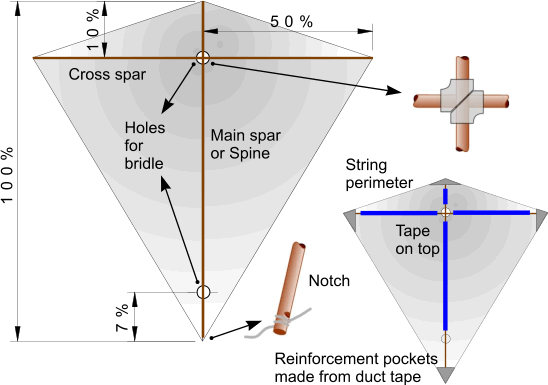Diamond, Eddy or Malay Kite Construction: Difference between revisions
From DT Online
m (Added Category) |
(Added Template) |
||
| Line 15: | Line 15: | ||
| [[File:DiamondKiteImages-3.png|thumb|KIte Fishing|link=https://en.wikipedia.org/wiki/Kite_fishing]] | | [[File:DiamondKiteImages-3.png|thumb|KIte Fishing|link=https://en.wikipedia.org/wiki/Kite_fishing]] | ||
|} | |} | ||
{{Kite Materials Buyers Guide}} | |||
[[Category:Kites]] | [[Category:Kites]] | ||
[[Category:Structures Tasks]] | [[Category:Structures Tasks]] | ||
Revision as of 08:12, 26 May 2016
Diamond, Eddy or Malay Kites are suitable for light to moderate breezes
- In May 1891, William Eddy attached Malayan kites together to gain the height needed for weather measurements.
- In 1942, US Navy Commander Paul Garber develops a controllable diamond kite to provide targets for gun practice.













